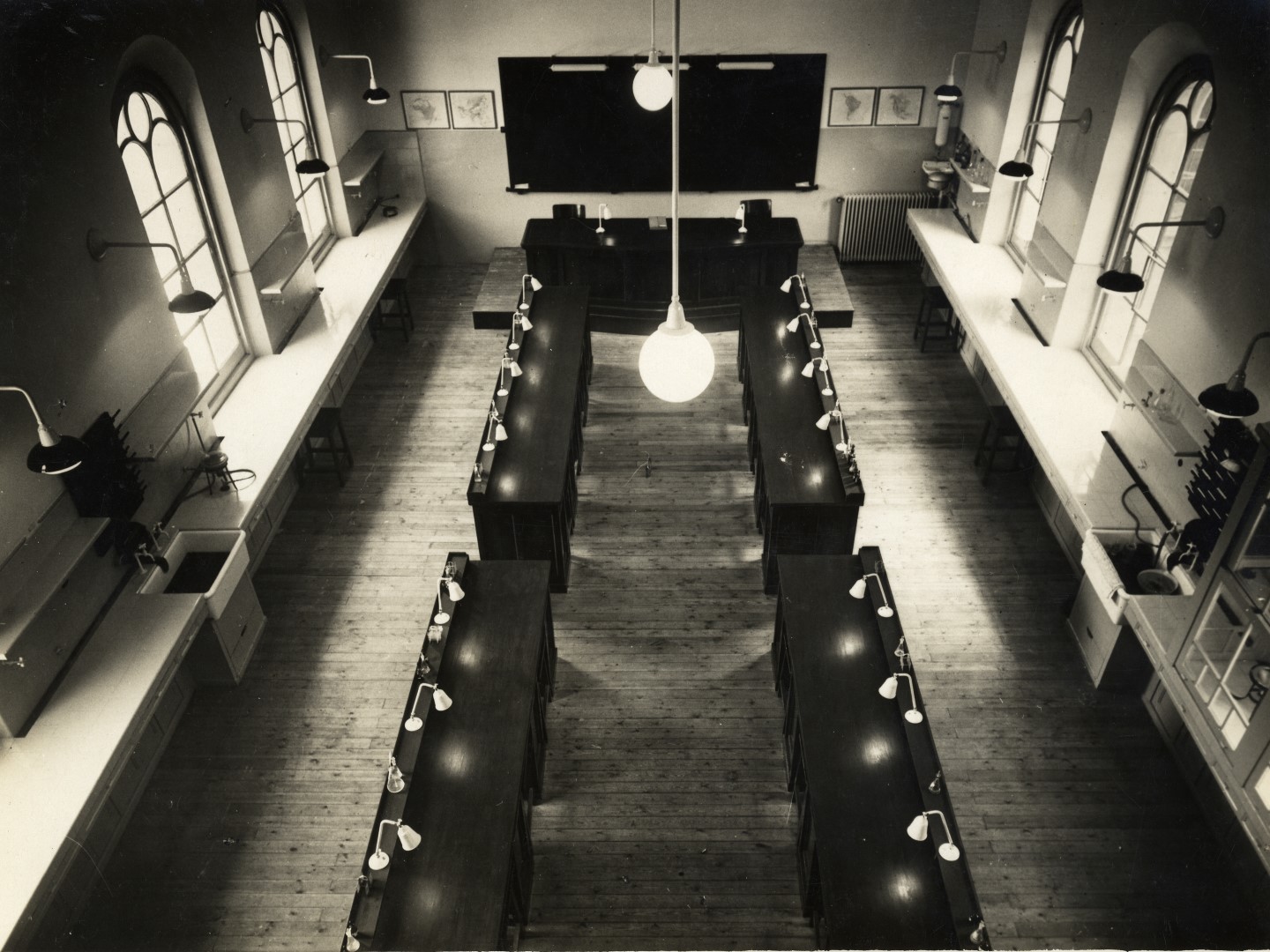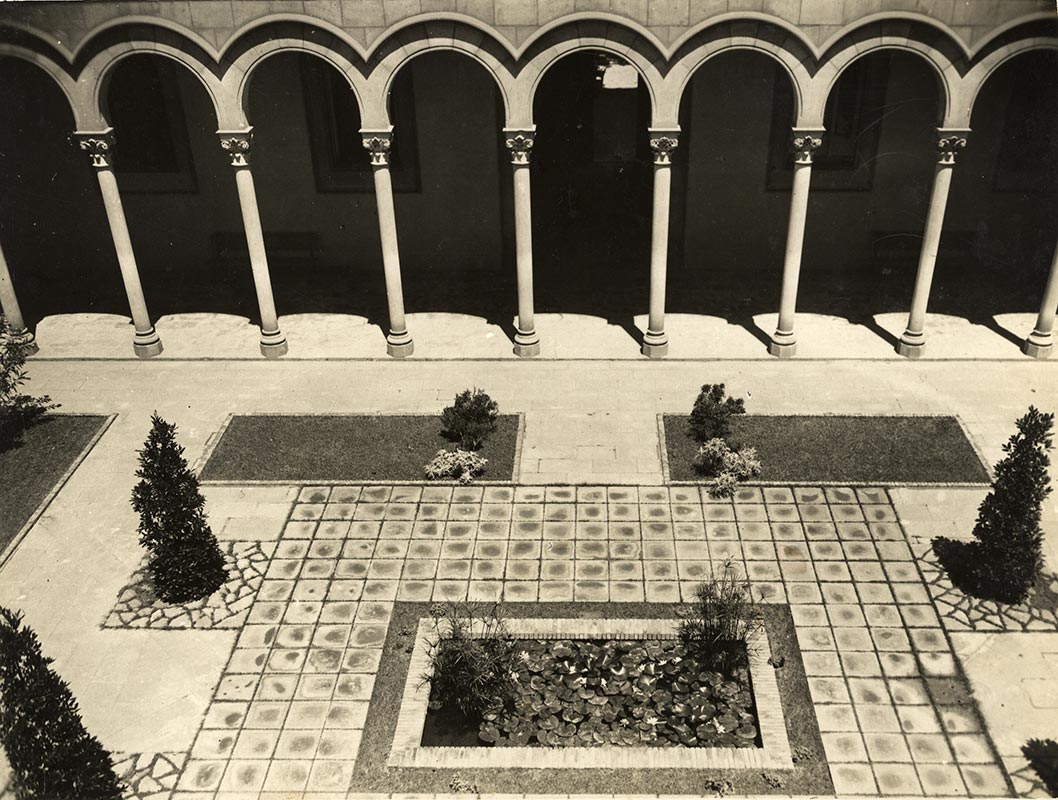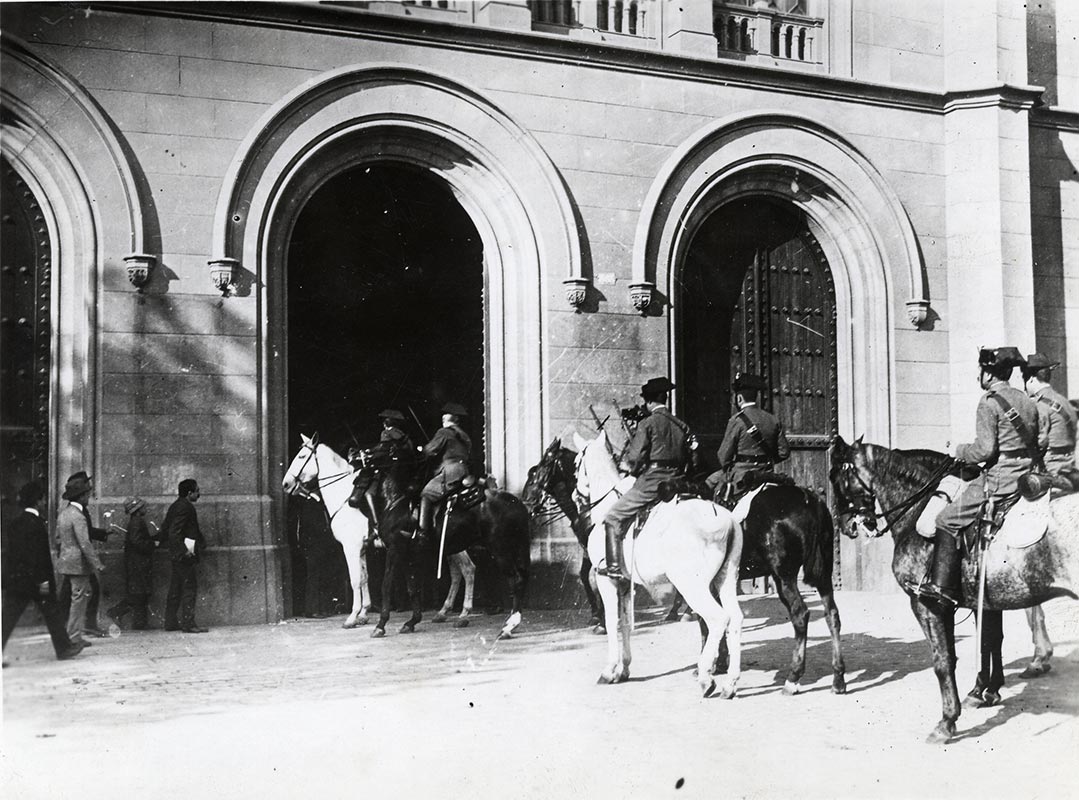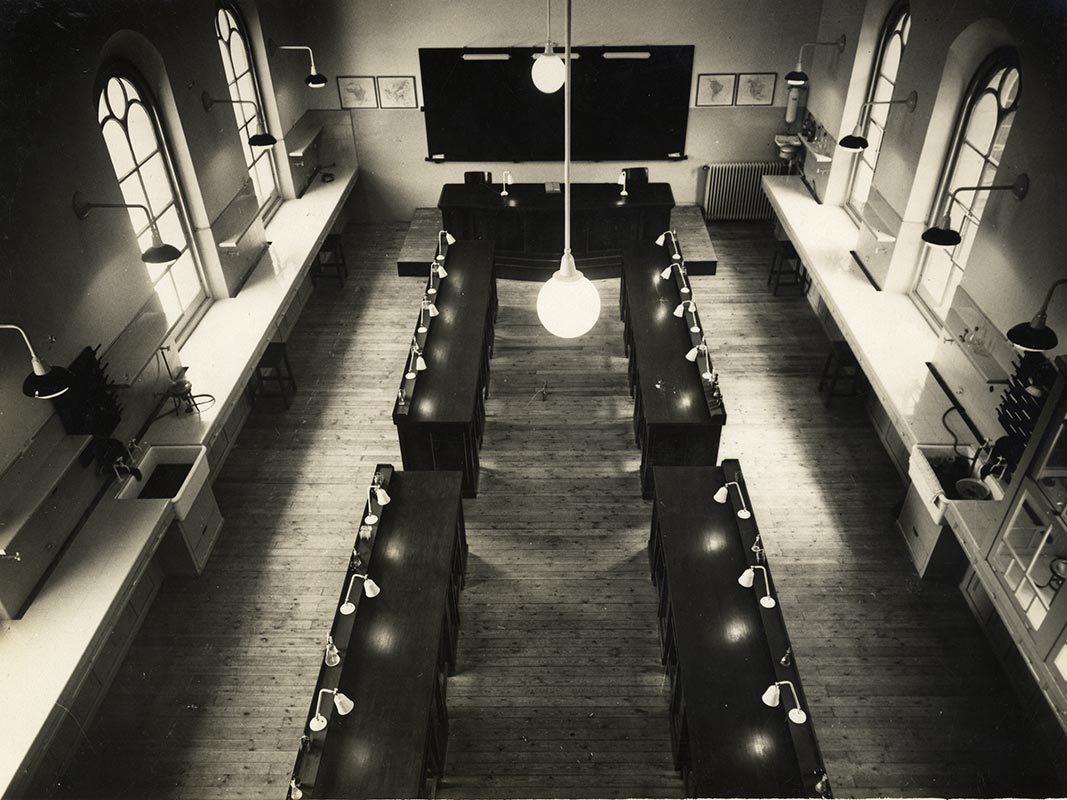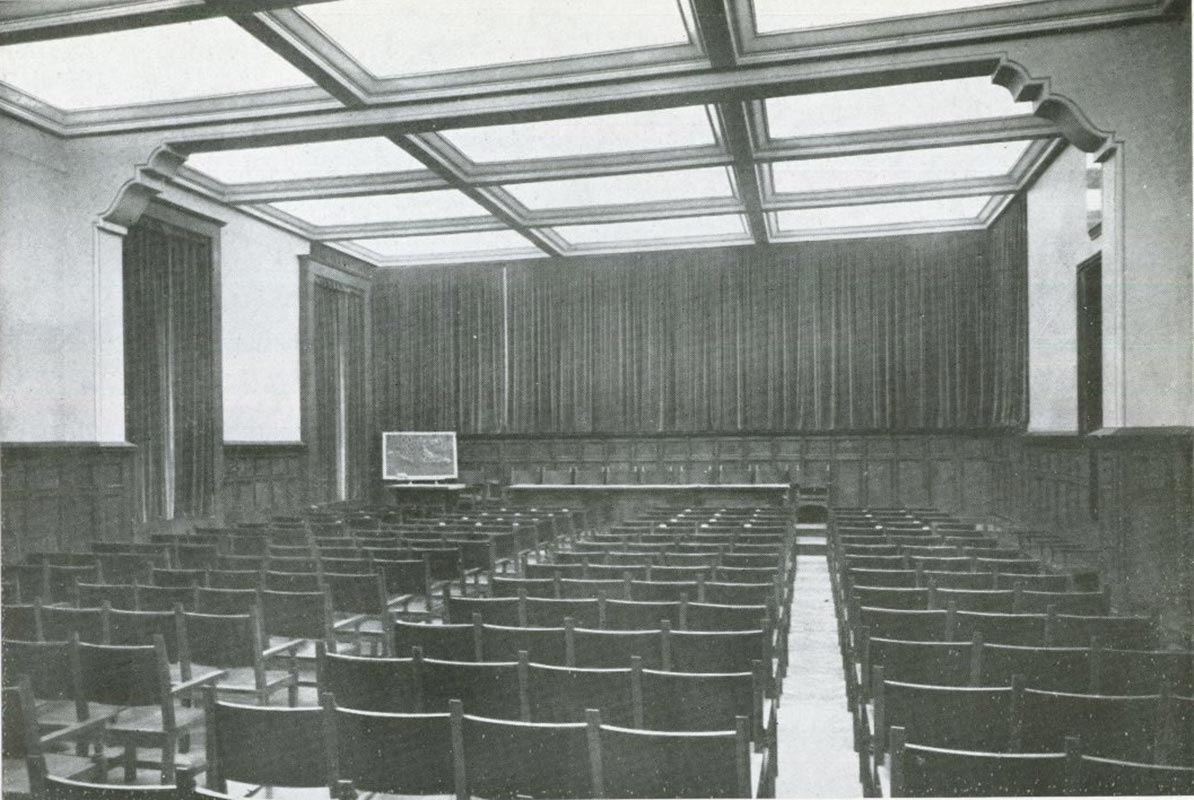
Some later alterations (20th century)
From 1 July 1933, the Autonomous University Board took charge of the building. Considering the state of neglect the building was found in, one of the Board's first provisions was to restore and adapt it, a task that was entrusted to the architects Josep González and Francesc Perales, during the periods when Jaume Serra Hunter and Pere Bosch Gimpera were rectors. The establishment of lily ponds and grass areas with cypresses in the courtyards dates from this period. The garden railings were removed and the garden itself was redesigned for use by students and lecturers. Many new teaching facilities were also created (lecture rooms, laboratories and seminar rooms).
More information
The use of the basements for various purposes, such as a bar, which represented a great novelty at the time, as well as toilets and changing rooms, also dates from this period (1934). One of the big transformations took place in 1936: the vestibule doors, which until then had been solid wooden ones with bronze nails, were replaced with glass ones. Although they preserved the frames with their metal nails, these were mounted on a rationalist-type bronze structure. In addition, between the years 1932 and 1937 important alteration works were carried out on the Library, specifically the Reading Room, which was considerably transformed at the hands of the rationalist architects Josep González Esplugues and Francesc Perales, members of the group GATCPAC (Grup d'Arquitectes i Tècnics Catalans per al Progrés de l'Arquitectura Contemporània).
Following the Civil War, during the period 1939-1945, repair and renovation work was carried out on the areas that had been damaged by bombing. In fact, the regime made a great deal of propaganda out of these reconstruction works in order to highlight the authorities' concern to reopen and reactivate the university centre. During the 1940s, other interesting alterations were made, such as the replacement of laboratories on the ground floor with the Chapel, or considerable alterations to the Aula Magna by the architect Josep Domènech Mansana.
Other alterations and adaptations of the building took place in 1967 and, above all, in 1970, during Fabià Estapé's period as Rector. He was responsible for the initiative, implemented by the Government, to have the Historic Building declared a "National Historic-Artistic Monument" in 1970.

